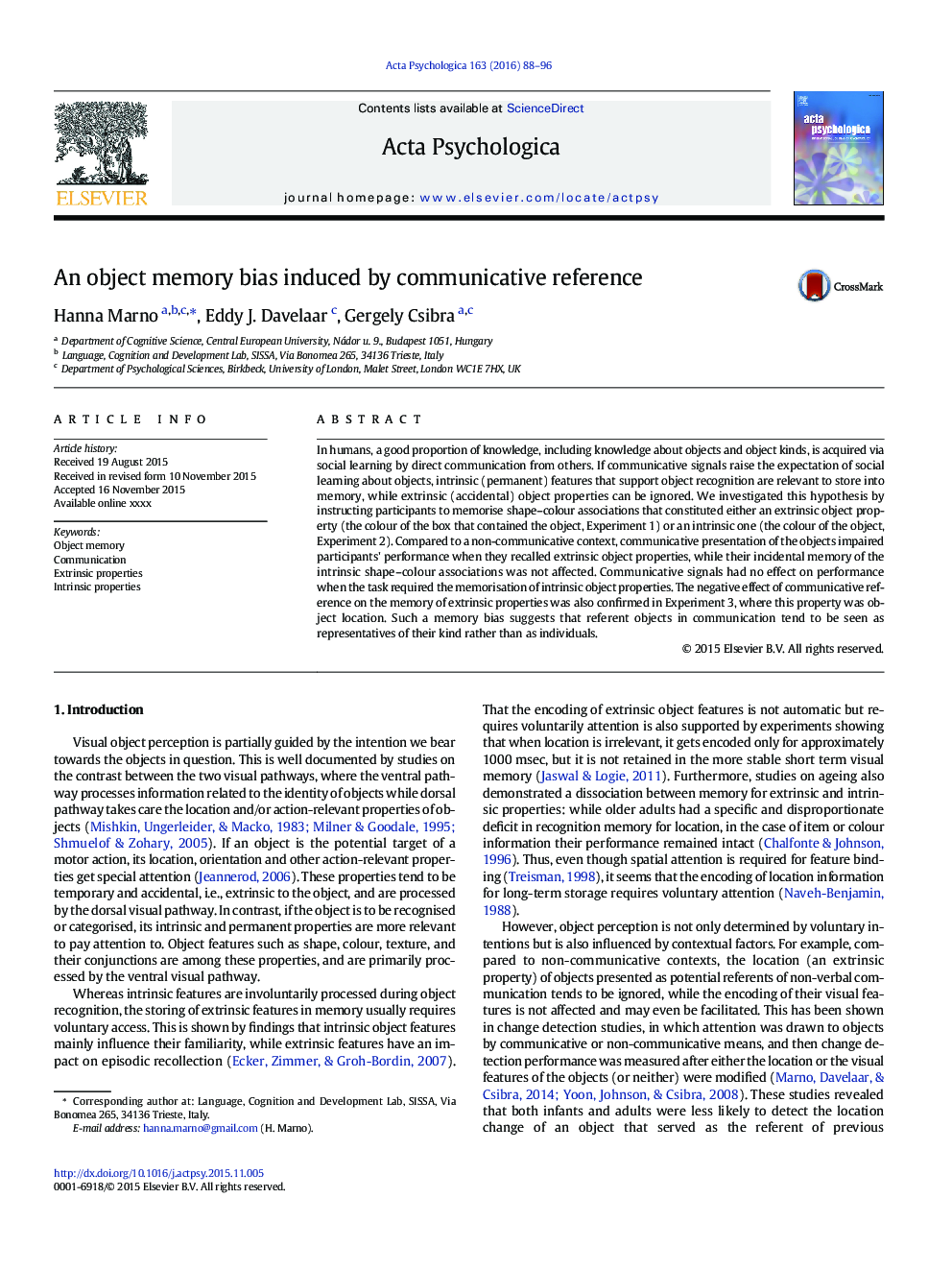| Article ID | Journal | Published Year | Pages | File Type |
|---|---|---|---|---|
| 7277145 | Acta Psychologica | 2016 | 9 Pages |
Abstract
In humans, a good proportion of knowledge, including knowledge about objects and object kinds, is acquired via social learning by direct communication from others. If communicative signals raise the expectation of social learning about objects, intrinsic (permanent) features that support object recognition are relevant to store into memory, while extrinsic (accidental) object properties can be ignored. We investigated this hypothesis by instructing participants to memorise shape-colour associations that constituted either an extrinsic object property (the colour of the box that contained the object, Experiment 1) or an intrinsic one (the colour of the object, Experiment 2). Compared to a non-communicative context, communicative presentation of the objects impaired participants' performance when they recalled extrinsic object properties, while their incidental memory of the intrinsic shape-colour associations was not affected. Communicative signals had no effect on performance when the task required the memorisation of intrinsic object properties. The negative effect of communicative reference on the memory of extrinsic properties was also confirmed in Experiment 3, where this property was object location. Such a memory bias suggests that referent objects in communication tend to be seen as representatives of their kind rather than as individuals.
Related Topics
Life Sciences
Neuroscience
Cognitive Neuroscience
Authors
Hanna Marno, Eddy J. Davelaar, Gergely Csibra,
